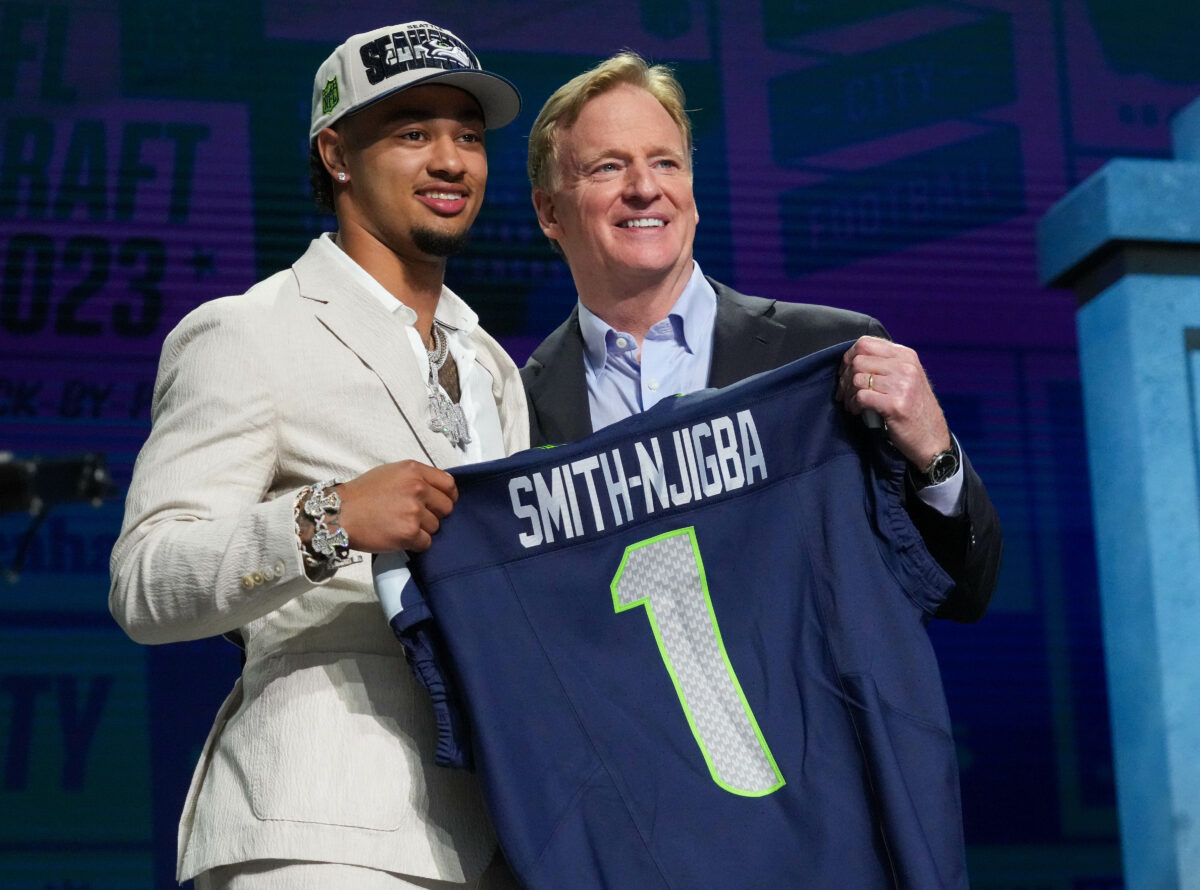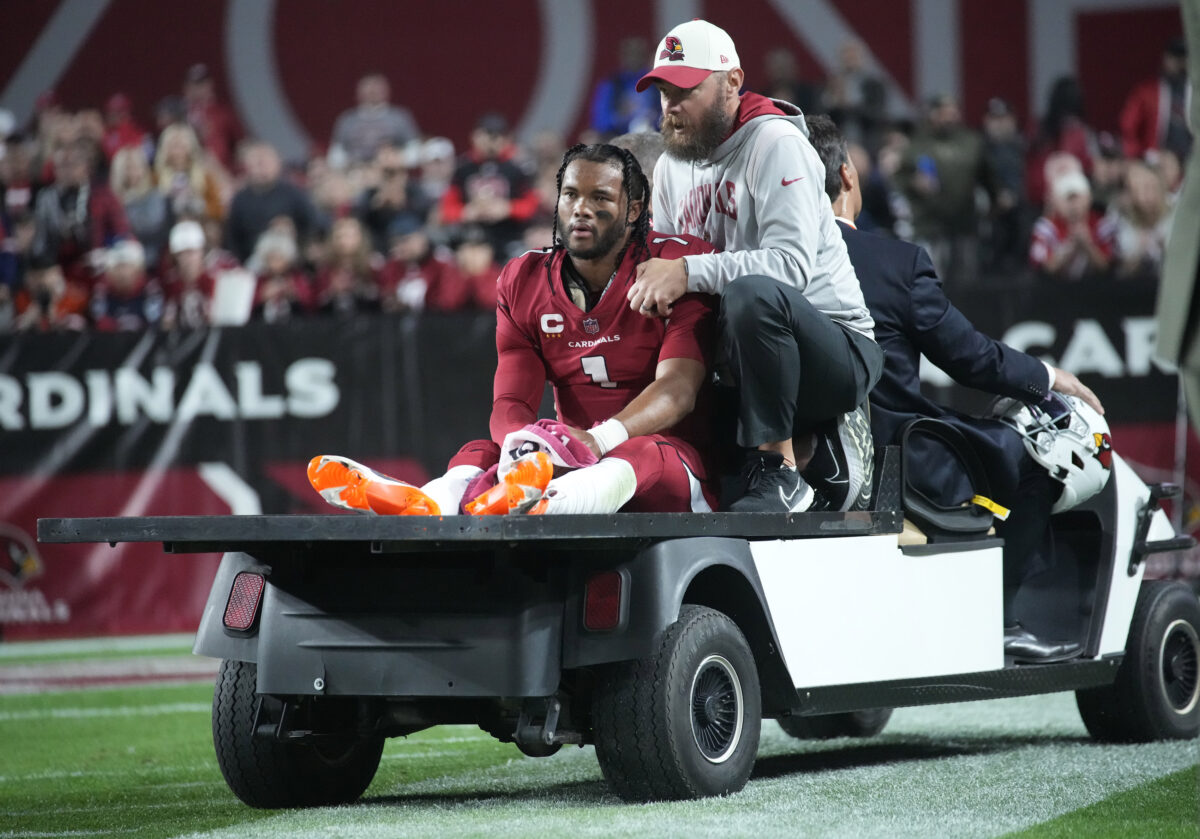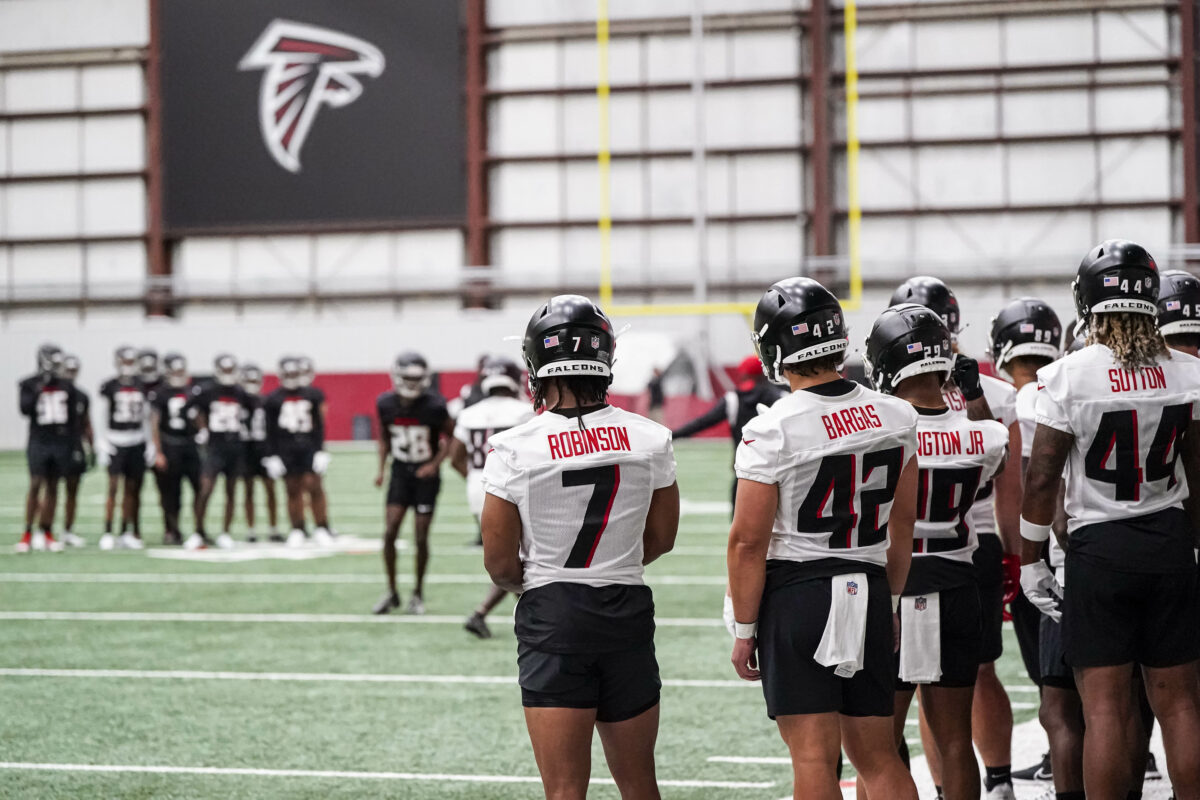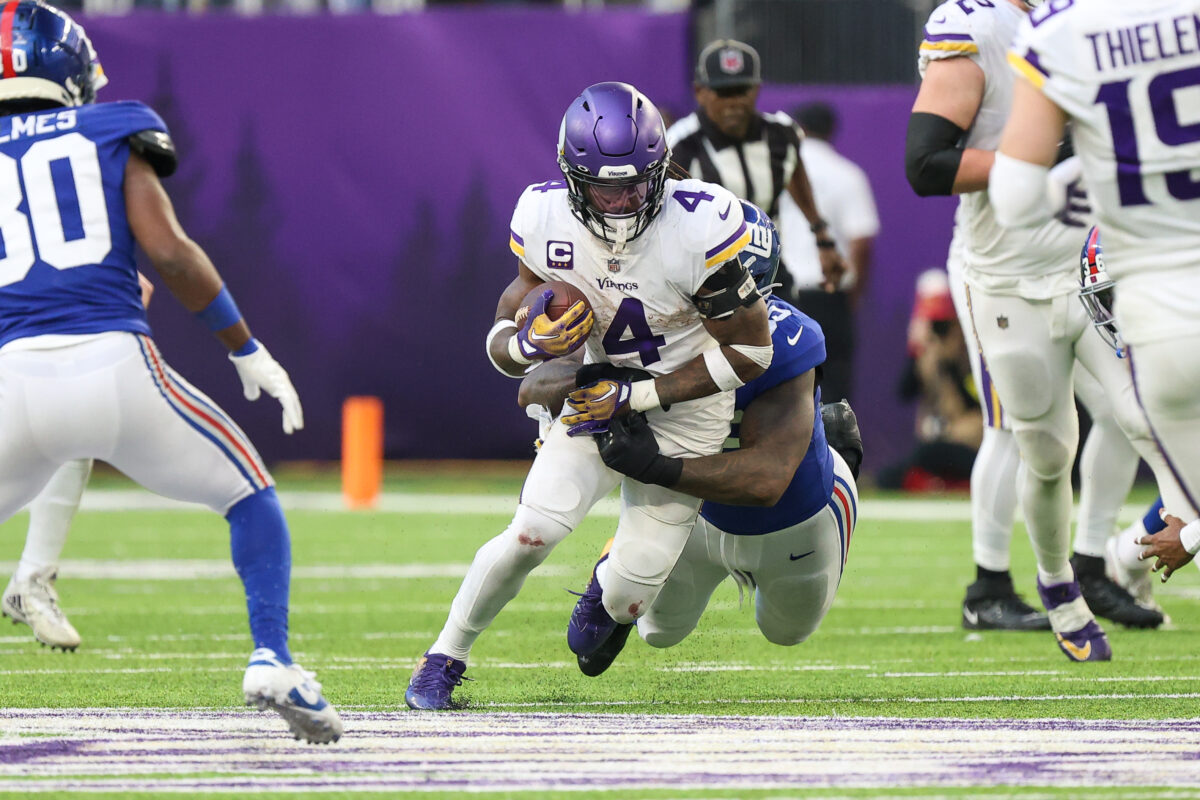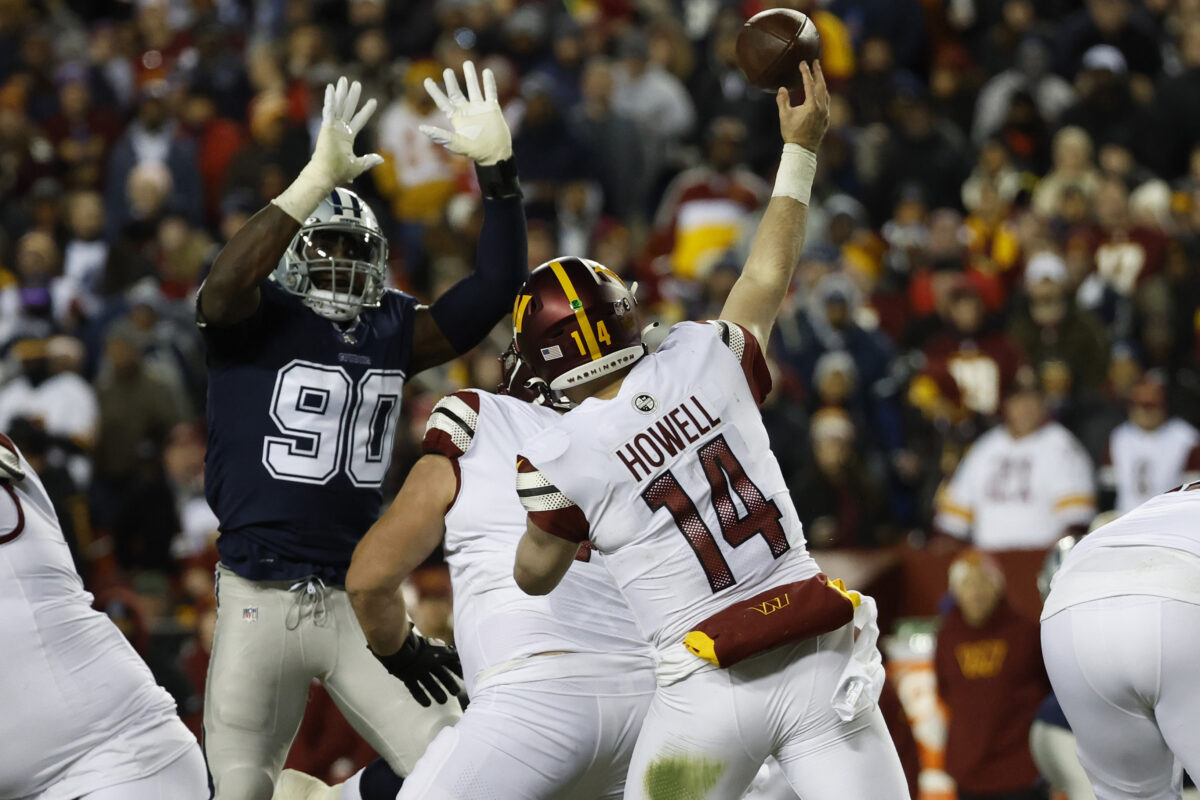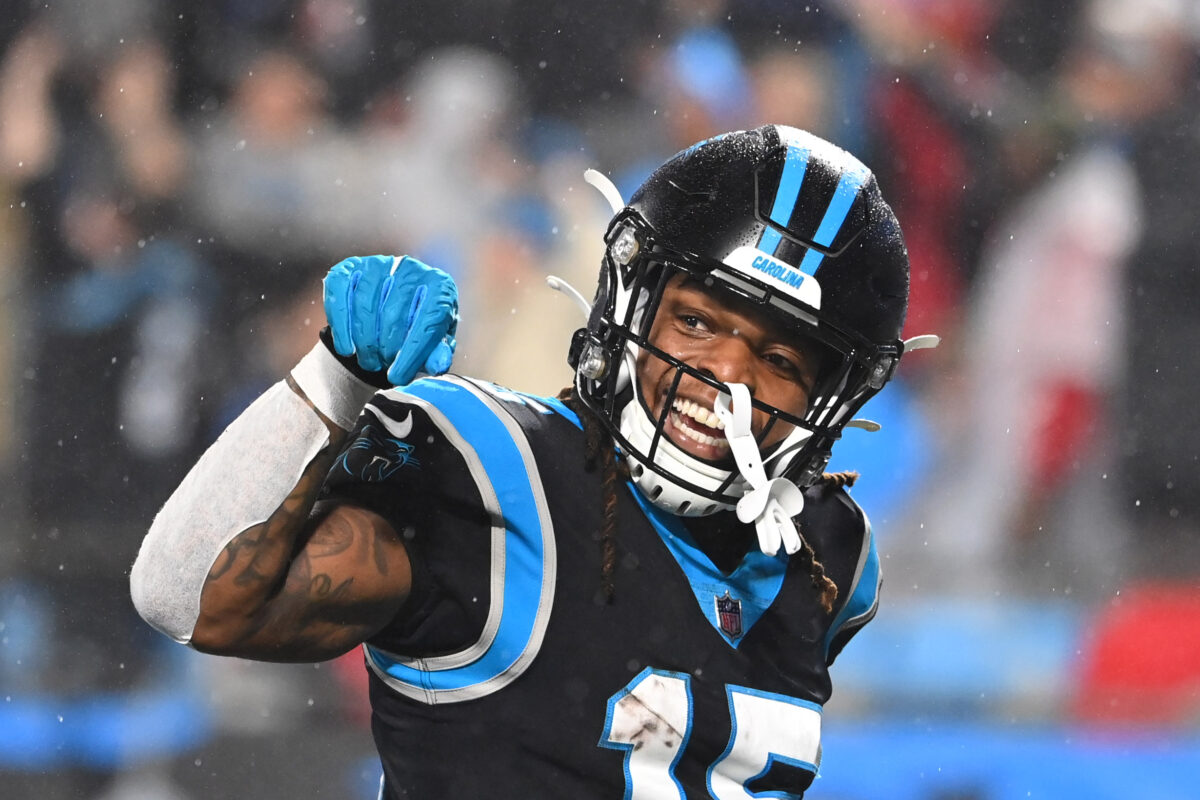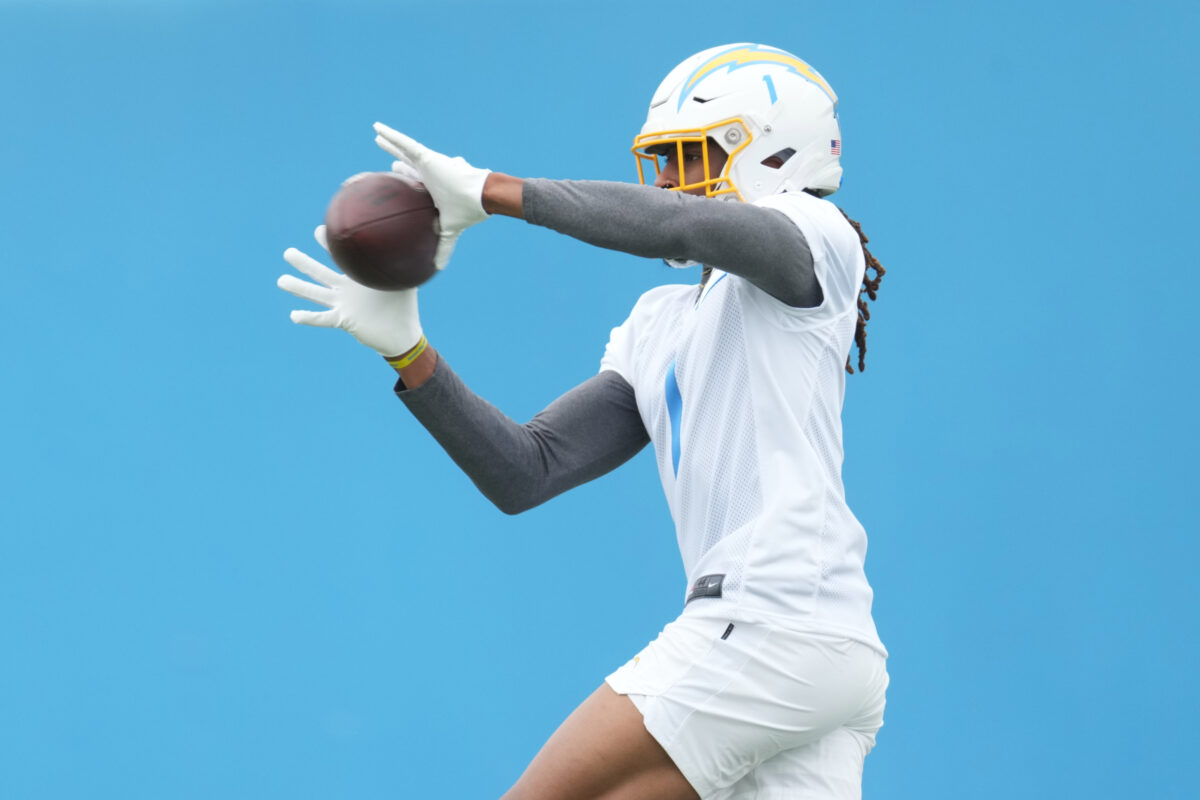LA’s offense is rich with talent, but there’s only one football. Will Johnston matter as a rookie?
With a positional depth chart that includes a five-time Pro Bowl selection (Keenan Allen), a former top-10 pick with two 1,000-yard campaigns under his belt (Mike Williams), and a third-year pro coming off a 72-769-3 effort in 2022 (Joshua Palmer), wide receiver didn’t look like a pressing need for the Los Angeles Chargers entering the 2023 NFL Draft. General manager Tom Telesco disagreed.
Telesco decided to use his first-round pick, 22nd overall, on TCU wideout Quentin Johnston, who caught 60 passes for 1,069 yards and six touchdowns as a junior last year. While the pick initially might have raised some eyebrows, especially given LA’s glaring issues running the ball and stopping the run, a closer look shows a potentially strong fit.
Let’s start with the holdovers. Long considered one of the NFL’s best route runners, Allen turned 31 in April and is coming of an injury-plagued 2022 that saw him miss seven games. The veteran is also more chain mover than downfield threat, having not eclipsed 12.0 yards per catch since 2018.
[lawrence-related id=477502]
Williams is great on contested balls, but he has dealt with injuries as well, and despite his size he’s topped five TD grabs in a season only once in the past four years. While Palmer took a step in Year 2, he’s yet to prove he’s more than a possession option.
Despite all three being talented contributors, there’s one thing they’re all missing: speed. That lack of big-play ability is borne out in Justin Herbert‘s numbers as the strong-armed quarterback averaged a career-low 6.8 yards per attempt — only Tom Brady (733) attempted more passes than Herbert (699), who finished second to Patrick Mahomes (5,250) in passing yardage (4,739) despite heavily featuring short and intermediate routes.
Los Angeles hopes the selection of Johnston will go a long way toward fixing that issue. The rookie has an exciting mix of size (6-foot-3, 208 pounds), speed, and acceleration, and he’ll be given every chance to claim the starting job opposite Williams on the outside with Allen manning the slot. In that scenario, Palmer would slide into the No. 4 receiver role.
There’s also sure to be changes as Kellen Moore takes over as offensive coordinator from Joe Lombardi. During his four years as the Dallas Cowboys’ OC, Moore’s offenses ranked in the top six in scoring three times, and in terms of pushing the ball downfield, Dak Prescott averaged 8.2, 8.4, 7.5, and 7.3 yards per attempt, respectively, under Moore.
Fantasy football outlook
Things could go a few ways for Johnston in 2023. If he comes in, picks up Moore’s playbook, and earns a starting job, he could become Herbert’s de facto deep threat. In that role, Johnston could have real value given Herbert’s willingness (and ability) to air it out.
If the rookie struggles, LA could roll with Allen, Williams, and Palmer, pushing Johnston into reserve duty. Even if that ends up being the case, he’s one injury away from a featured role in a prominent passing design.
Consider Johnston a borderline top-50 fantasy receiver who would make an intriguing late-round target.

